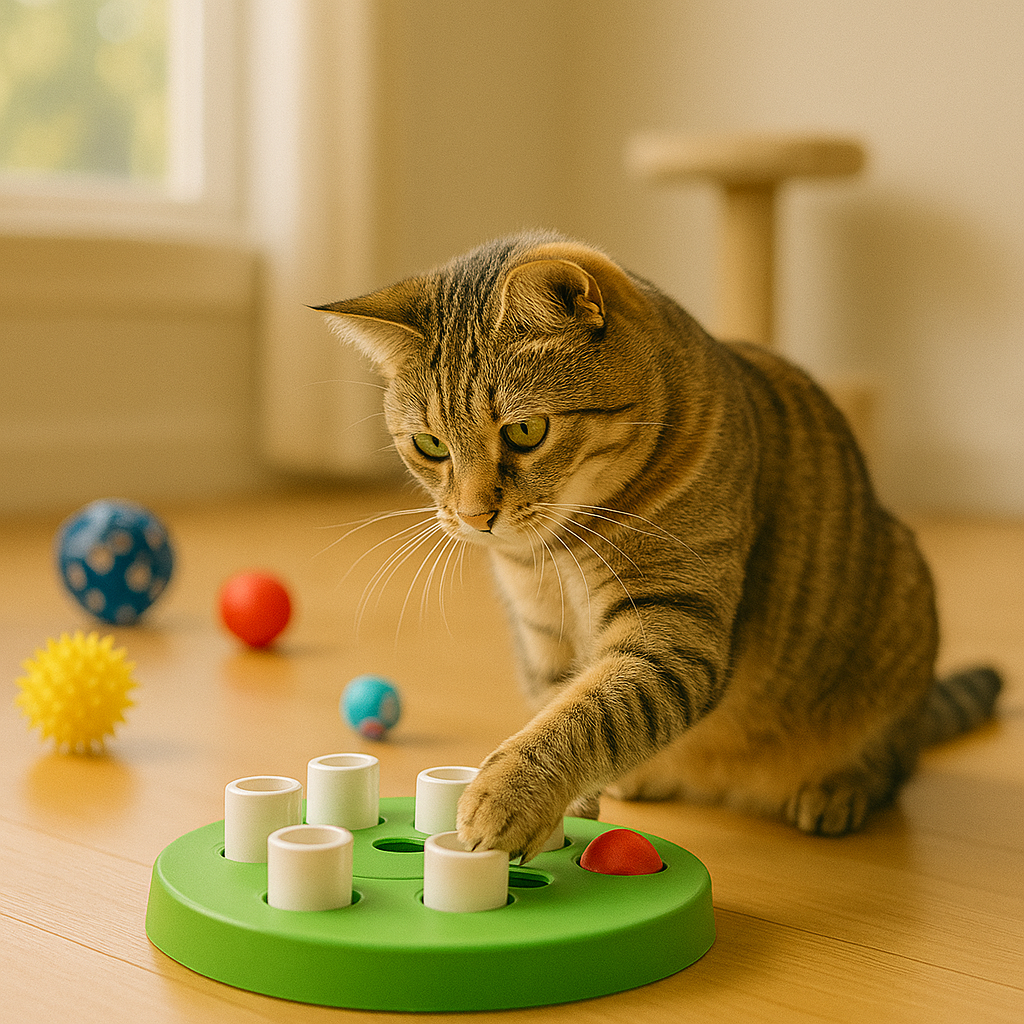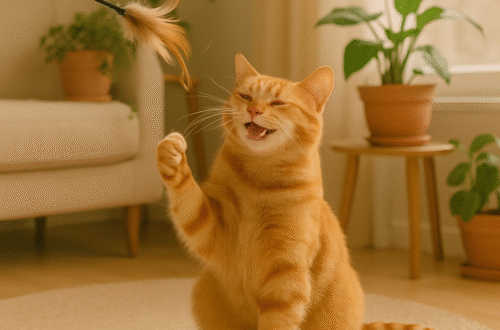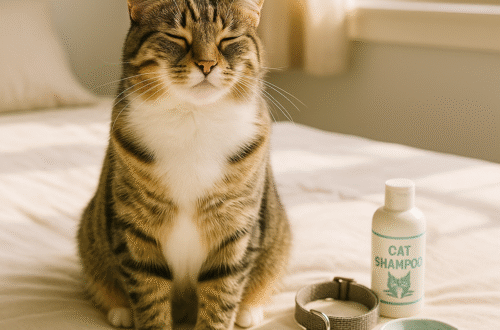Why Feline Enrichment Matters More Than You Think
Indoor cats often live safer and longer lives but without stimulation, they can easily become bored, stressed, or even depressed. Many cat owners assume that a cozy nap spot and a few toys are enough. In reality, cats are natural hunters, problem-solvers, and curious explorers. When those instincts aren’t exercised, they may act out by scratching furniture, over-grooming, or overeating.
Feline enrichment is the key to a happier, healthier, and better-behaved cat. It taps into your cat’s mental, physical, and sensory needs, helping them stay sharp and engaged especially in indoor environments. In this guide, we’ll explore the most effective and easy-to-implement enrichment ideas that fit your lifestyle and budget.
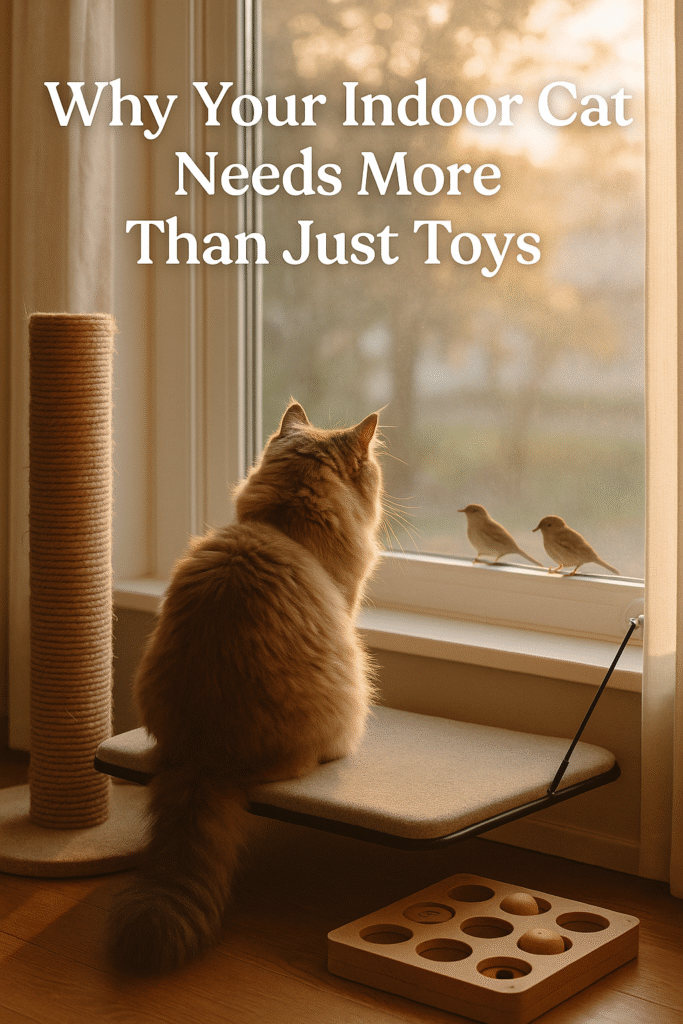
The 5 Types of Cat Enrichment Explained
Not all enrichment is created equal. To truly meet your cat’s needs, it’s important to engage their mind, body, and instincts in different ways. Most feline enrichment strategies fall into one (or more) of the following five categories:
1. Environmental Enrichment
This focuses on improving your cat’s physical space think vertical climbing areas, hiding spots, cozy windowsills, or interactive furniture. Environmental changes help your cat feel more in control of their territory.
2. Sensory Enrichment
Cats experience the world through scent, sight, hearing, and touch. Sensory enrichment introduces safe new smells (like catnip or silvervine), moving visuals (like fish tanks or bird feeders outside windows), different sounds (soft cat-friendly music), and a variety of textures to explore.
3. Social Enrichment
Cats are often thought to be independent, but many thrive with interaction. This includes play sessions with you, bonding through grooming or training, and even socializing with other pets (if they’re comfortable).
4. Feeding Enrichment
Let your cat work for their food! Using puzzle feeders, treat balls, lick mats, or hiding kibble encourages natural foraging and hunting behavior, turning a boring meal into a mentally stimulating activity.
5. Toy-Based Enrichment
Toys aren’t just for fun they’re functional tools for physical exercise and mental stimulation. Rotating toys, offering puzzle challenges, and incorporating movement (like feather wands or robotic mice) keeps playtime exciting.
Best Toys for Cat Mental Stimulation
Toys do more than entertain they can challenge your cat’s brain, mimic hunting behavior, and prevent destructive habits. But not all toys are created equal. For real enrichment, you’ll want toys that make your cat think, not just chase.
Here are some of the most effective and highly recommended mental stimulation toys:
1. Treat Puzzle Toys
These require your cat to solve a problem before they get a treat. Popular options include:
- Food maze bowls
- Treat-dispensing balls
- Flip-lid or sliding-tile puzzles
They’re perfect for slowing down fast eaters while also stimulating their minds.
2. Interactive Electronic Toys
Battery-powered toys like:
- Motion-activated laser lights
- Robotic mice that dart unpredictably
- Spinning feather toys with timers
These keep cats intrigued without requiring constant human input.
3. Hunt & Catch Toys
Mimic prey with feather wands, crinkle balls, or plush mice. These stimulate your cat’s natural predatory drive and work best during short, intense play sessions.
Pro Tip: End play with a treat or meal to mimic a successful “hunt.”
4. Toy Rotation Strategy
Even the best toy gets boring if it’s always available. Rotate 2–3 different toys every week to keep things fresh and exciting.
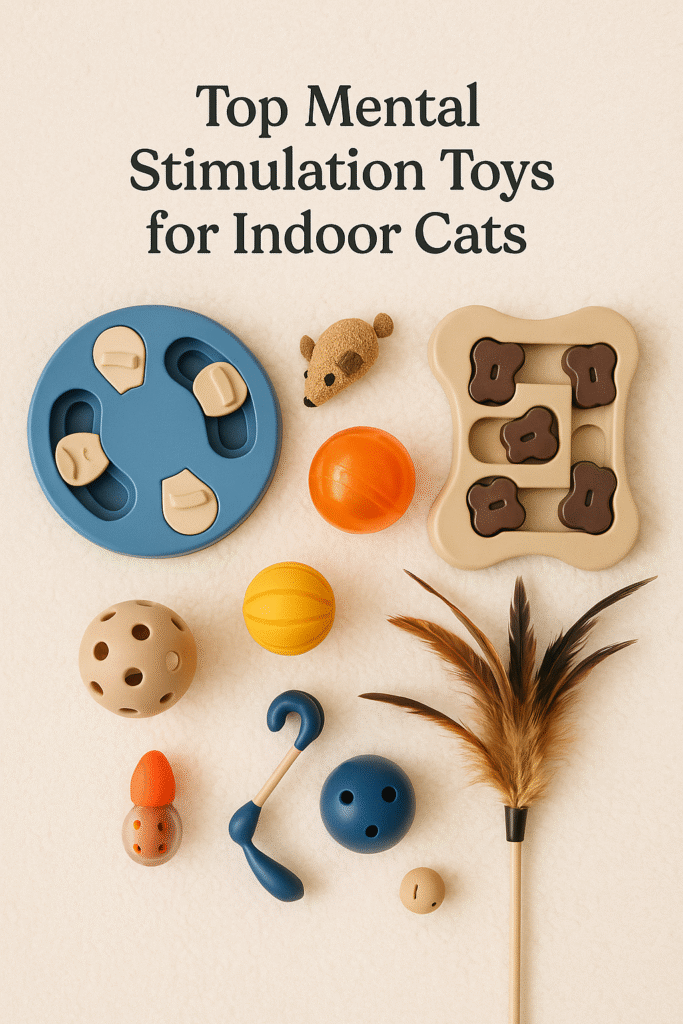
Food-Based Enrichment Make Mealtime an Adventure
Feeding your cat doesn’t have to mean simply dropping kibble in a bowl. In the wild, cats spend hours hunting stalking, chasing, and catching their food. You can recreate this natural behavior at home with food-based enrichment. It keeps your cat mentally sharp, physically engaged, and slows down fast eaters.
Here’s how to turn every meal into a fun challenge:
1. Use Puzzle Feeders or Food Mazes
These tools make your cat “work” for each bite. They come in various forms, such as:
- Maze bowls that require pawing
- Ball-shaped dispensers that roll and drop kibble
- Puzzle trays with compartments or sliders
These slow down eating and stimulate problem-solving.
2. Try Scatter Feeding or Hide-and-Seek Snacks
Instead of serving everything in one place, scatter small amounts of dry food around a room or hide it in different spots. It encourages foraging behavior and turns mealtime into a mini treasure hunt.
3. DIY Foraging Toys from Household Items
No need to spend a lot! You can make simple food puzzles using:
- Toilet paper rolls folded on each end
- Egg cartons with treats in the slots
- Muffin tins covered with balls or fabric scraps
It’s budget-friendly and endlessly creative.
4. Lick Mats for Wet Food
Smear a thin layer of wet food or plain yogurt (safe for cats) onto a silicone lick mat. This satisfies licking urges and reduces anxiety.
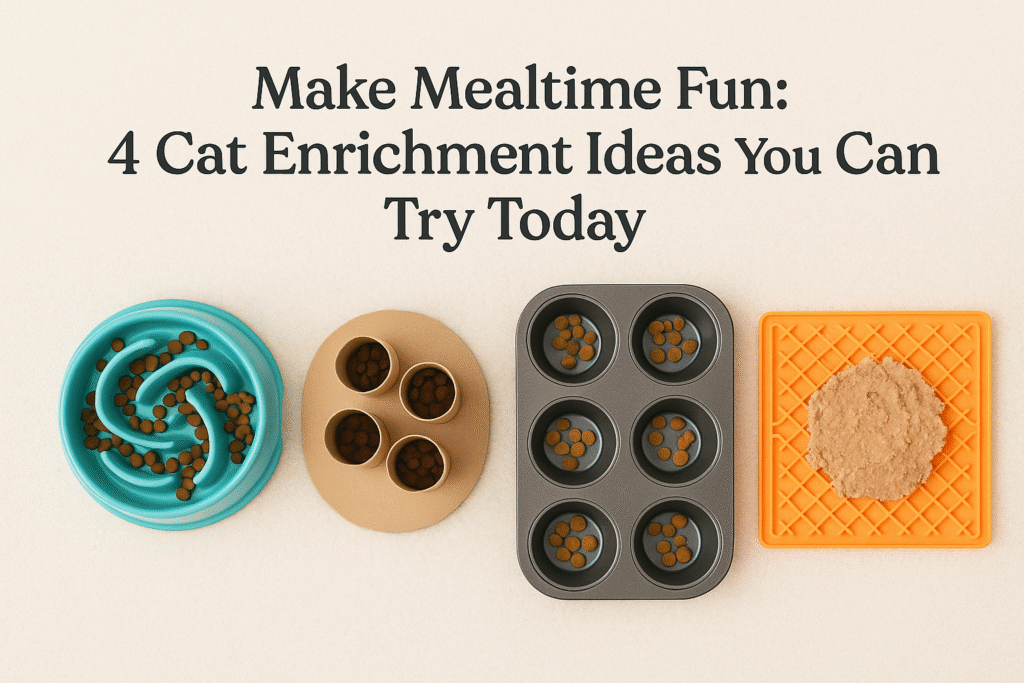
Pro Tip: Start Easy
If your cat is new to puzzle feeding, start with simpler tools and increase difficulty over time. You’ll see their skills and confidence grow.
